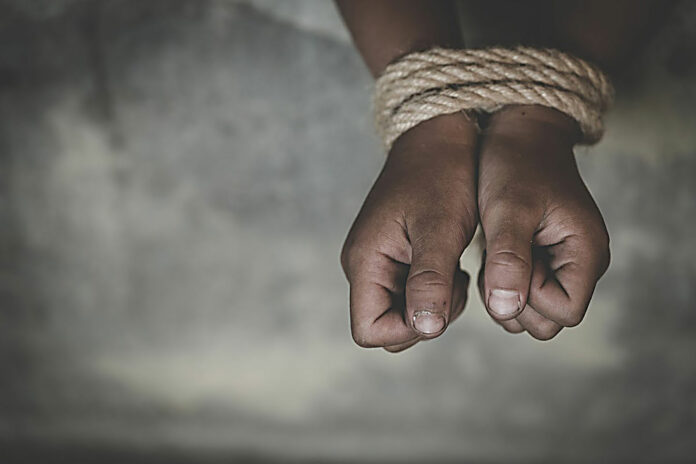Calvin Chepsiror
Introduction
Child trafficking is a severe violation of children’s rights and remains a global challenge, including in Kenya. It refers to the recruitment, harboring, transportation, transfer, or receipt of children for exploitation. Various forms of child trafficking exist, each threatening the safety, dignity, and future of the affected children.
In Kenya, the Counter-Trafficking in Persons Act (2010) criminalizes all forms of trafficking, including the exploitation of children. Additionally, the Kenyan Constitution, Article 53(1)(d) guarantees every child the right to be protected from abuse, neglect, harmful cultural practices, and all forms of violence or exploitation, including trafficking. The law further states that
- A person commits the offence of trafficking in persons when the person recruits, transports, transfers, harbours or receives another person for the purpose of exploitation by means of—
(a) threat or use of force or other forms of coercion;
(b)abduction;
(c) fraud
(d) deception;
(e) abuse of power or of position of vulnerability;
(f) giving payments or benefits to obtain the consent of the victim of trafficking in persons; or
(g) giving or receiving payments or benefits to obtain the consent of a person having control over another person.
- The consent of a victim of trafficking in persons to the intended exploitation shall not be relevant where any of the means set out in subsection (1) have been used.
- The recruitment, transportation, transfer, harbouring or receipt of a child for the purposes of exploitation shall be considered “trafficking in persons” even if this does not involve any of the means set out in subsection (1).
- An act of trafficking in persons may be committed internally within the borders of Kenya or internationally across the borders of Kenya. By the Counter Trafficking in Persons Act a child shall mean any person under eighteen years of age.
Types of Child Trafficking
- Sexual Exploitation
One of the most prevalent forms of child trafficking is trafficking for sexual exploitation. This includes child prostitution, child pornography, and sex tourism, where children are coerced or deceived into engaging in sexual acts for commercial gain. Such exploitation strips children of their innocence and exposes them to severe physical, psychological, and emotional harm. Despite the legal prohibitions in Kenya, economic vulnerability and weak enforcement mechanisms often exacerbate this form of trafficking, particularly among marginalized communities.
- Forced Labor and Exploitation
Another significant form of child trafficking is forced labor and exploitation. Children are trafficked to perform hazardous work in homes (domestic servitude), farms (agricultural labor), industries, or informal sectors. They may also be exploited on the streets as beggars or street vendors. These children endure harsh conditions, long working hours, and little or no pay, in direct violation of their rights under Article 53(1)(c) of the Constitution, which guarantees the right to free and compulsory education. Forced labor deprives children of their right to a safe and nurturing childhood and hampers their access to education.
- Child Marriage
In addition, trafficking for forced marriage remains a significant issue in some regions of Kenya. Girls are often trafficked into early marriages for economic, cultural, or social reasons. This practice not only denies them their childhood but also exposes them to early pregnancies, gender-based violence, and limited access to education and economic opportunities. The Kenyan Constitution, under Article 45, recognizes marriage as a union based on free consent, making forced marriages illegal and exploitative.
- Trafficking for illegal activities and Child Soldiers
Children are also trafficked as child soldiers in conflict zones, where they are forced to serve as combatants, spies, messengers, or porters for armed groups. Girls, in particular, face additional risks of sexual exploitation and abuse. This form of trafficking violates their basic human rights and international conventions such as the United Nations Convention on the Rights of the Child (UNCRC), to which Kenya is a signatory. Children are also exploited for criminal activities such as drug trafficking, theft, or fraud, where they are coerced into breaking the law for their traffickers.
Finally, in some cases, children are trafficked for ritual practices, particularly in communities where harmful beliefs persist. This may involve using children’s body parts for witchcraft, superstition, or spiritual rituals. Children with disabilities or those with albinism are particularly vulnerable to such practices.
- Illegal Adoption and Organ Harvesting
Other forms of child trafficking include illegal adoption and organ harvesting. Children may be trafficked for fraudulent adoptions, where legal processes are bypassed, or for the harvesting of organs to meet illegal transplant demands. These practices are particularly heinous, as they treat children as commodities for financial gain.
In addressing these forms of child trafficking, Kenya’s Counter-Trafficking in Persons Act (2010) plays a critical role in ensuring legal penalties for traffickers and protecting victims. However, effective enforcement of these laws, along with awareness creation, community empowerment, and international cooperation, is essential to combat this menace. Upholding the provisions of the Kenyan Constitution, particularly Articles 53 and 45, is critical in ensuring that children’s rights are safeguarded, and all forms of exploitation are eradicated.
- https://kenyalaw.org/kl/fileadmin/pdfdownloads/Acts/Counter-TraffickinginPersonsAct_No8of2010.pdf
- https://debunk.media/sex-tourism-in-kenyas-coast-a-form-of-neocolonialism/
- https://icj-kenya.org/news/trafficking-and-sexual-exploitation-impairs-womens-fundamental-rights-and-freedoms/#:~:text=Economic%20hardships%2C%20limited%20opportunities%20and,ugly%20head%20in%20various%20communities.
- https://www.klrc.go.ke/index.php/constitution-of-kenya/113-chapter-four-the-bill-of-rights/part-3-specific-application-of-rights/219-53-children

